
Mount Everest is Earth's highest mountain above sea level, located in the Mahalangur Himal sub-range of the Himalayas. The China–Nepal border runs across its summit point. Its elevation of 8,848.86 m was most recently established in 2020 by the Chinese and Nepali authorities.

The TI-99/4 and TI-99/4A are home computers released by Texas Instruments in 1979 and 1981, respectively. Based on the Texas Instruments TMS9900 microprocessor originally used in minicomputers, the TI-99/4 was the first 16-bit home computer. The associated video display controller provides color graphics and sprite support which were only comparable with those of the Atari 400 and 800 released a month after the TI-99/4.

Ice Climber is a platform game developed and published by Nintendo for the arcade VS. System in 1984, and for the Famicom and Nintendo Entertainment System consoles in 1985. The characters Popo and Nana, collectively known as the Ice Climbers, scale 32 vertically scrolling, ice-covered mountains to recover stolen vegetables from a giant condor. In some European countries, Ice Climber was bundled with the Nintendo Entertainment System.
Peter Boardman was an English mountaineer and author. He is best known for a series of bold and lightweight expeditions to the Himalayas, often in partnership with Joe Tasker, and for his contribution to mountain literature. Boardman and Tasker died on the North East Ridge of Mount Everest in 1982. The Boardman Tasker Prize for Mountain Literature was established in their memory.

Miner 2049er is a platform game created by Bill Hogue that was released in 1982 by Big Five Software. It was developed for the Atari 8-bit family and widely converted to other systems. The title "Miner 2049er" evokes a 21st-century take on the circa-1849 California Gold Rush in which the gold miners and prospectors were nicknamed "49ers". It was the first Atari computer game, and by far the biggest release, from the previously TRS-80 focused company.

Congo Bongo, also known as Tip Top, is an platform game released as an arcade video game by Sega in 1983. A message in the ROM indicates it was coded at least in part by the company Ikegami Tsushinki. The game is viewed in an isometric perspective, like Sega's earlier Zaxxon (1982), but does not scroll. Numerous home ports followed.
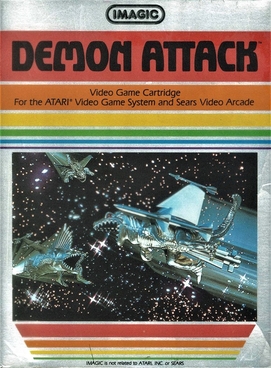
Demon Attack is a fixed shooter programmed by Rob Fulop for the Atari 2600 and published by Imagic in 1982. It sold over 2 million cartridges. Demon Attack was ported to the Intellivision, Magnavox Odyssey 2, Atari 8-bit family, VIC-20, Commodore 64, Tandy 1000, TRS-80, IBM PCjr, and TRS-80 Color Computer. There is also a port for the TI-99/4A titled Super Demon Attack.
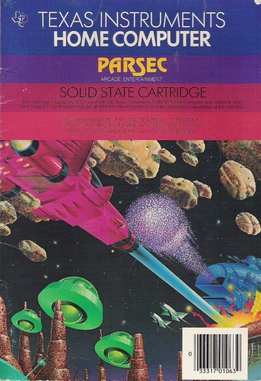
Parsec is a horizontally scrolling shooter written by Jim Dramis and Paul Urbanus for the TI-99/4A and published by Texas Instruments in 1982. Dramis also programmed Car Wars and Munch Man for the TI-99/4A.
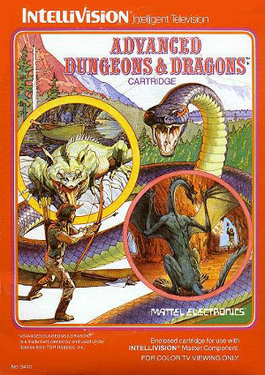
Advanced Dungeons & Dragons is an Intellivision game; it was one of the first Advanced Dungeons & Dragons games to be licensed by TSR, Inc. It was later retitled to Advanced Dungeons & Dragons: Cloudy Mountain to distinguish it from the sequel, Advanced Dungeons & Dragons: Treasure of Tarmin. It is the first Intellivision cartridge to use more than 4K of ROM.
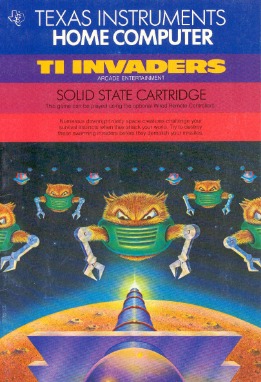
TI Invaders is a fixed shooter video game published by Texas Instruments in 1981 for the TI-99/4A home computer. The game is a Space Invaders clone where the goal is to shoot all of the aliens before they reach the bottom of the screen. TI Invaders is part of the TI Arcade Game Series which includes Tombstone City: 21st Century and Car Wars.

A ROM cartridge, usually referred to in context simply as a cartridge, cart, or card, is a replaceable part designed to be connected to a consumer electronics device such as a home computer, video game console or, to a lesser extent, electronic musical instruments.

Munch Man is a video game written by Jim Dramis for the TI-99/4A home computer and published as a cartridge by Texas Instruments in 1982. Based on Namco's Pac-Man, it includes several variations that alter gameplay. Instead of emptying the maze of dots, Munch Man leaves a chain-like pattern as it moves, and the goal is to fill the entire maze. Dramis later wrote Parsec for the TI-99/4A.

Microsurgeon is a maze-like video game published by Imagic in 1982 for the Mattel Intellivision game console. The game was ported to the TI-99/4A computer and the IBM PCjr. Microsurgeon was re-released as part of the Intellivision Rocks collection.

Minotron: 2112 is a video game for iOS written by Jeff Minter and Ivan Zorzin of Llamasoft. It is a remade mobile version of Llamatron for the Atari ST and Amiga, which itself is an updated version of the 1982 arcade game Robotron: 2084. It is the Minotaur Project game representing the Mattel Intellivision.
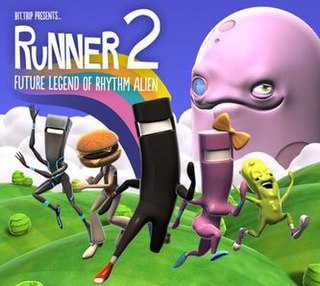
Bit.Trip Presents... Runner2: Future Legend of Rhythm Alien, generally shortened as Runner2, is a 2013 side-scrolling platformer developed by Gaijin Games. The game is the direct sequel to Bit.Trip Runner and has been released as a downloadable title available on the PlayStation 3, PlayStation Vita, Xbox 360 and Wii U consoles, Microsoft Windows, OS X, Linux and on iOS, as well as PlayStation 4 in 2016. The PC, Mac, Linux, and Wii U versions were self-published by Gaijin Games, and the Xbox 360 and PlayStation 3 versions were published by Aksys Games.

Slime is a video game for the Atari 8-bit family of home computers written by Steve Hales and published by Synapse Software in 1982. The player attempts to protect their ship from a rain of enormous drops of slime by deflecting them into canisters, while fending off attacks by an alien flying saucer. A TI-99/4A port was developed as Super Storm, but not released.
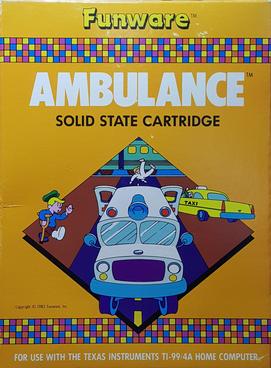
Ambulance is a video game written by Kent Stevenson for the TI-99/4A and released by Funware in 1983 in the United States.
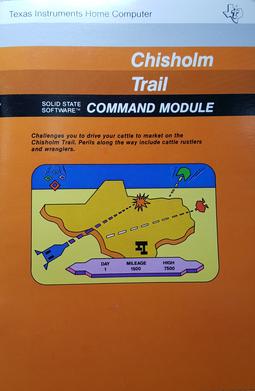
Chisholm Trail is a video game released in July 1982 by Texas Instruments for its TI-99/4A home computer. It was written by John C. Plaster, who previously wrote Tombstone City: 21st Century for the TI-99/4A.

The Attack is a multidirectional shooter video game created, designed, and implemented by Jim Pettingell for the TI-99/4A home computer and published by Texas Instruments in 1981. The game was developed at Milton Bradley as Alien Attack, inspired by the movies Alien (1979) and Barbarella (1968). After being sold to TI, the name was changed to The Attack.
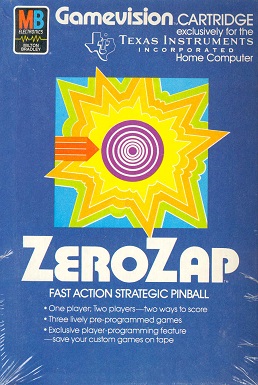
Zero Zap is a video game programmed by Herb Schmitz for the TI-99/4 and TI-99/4A home computers and published by Milton Bradley Company in 1979. It is part of the Milton Bradley Gamevision series, which consists of seven cartridges: Connect Four, Yahtzee, Hangman, Zero Zap, Card Sharp, Stratego, and the Gamevision Demonstration Cartridge. These seven cartridges were the launch titles for the TI-99/4 in 1979. This would mark the first third party to actually release games for the TI-99/4 system. Milton Bradley was only planning on producing these cartridges for a short time period before passing production over to Texas Instruments.




















